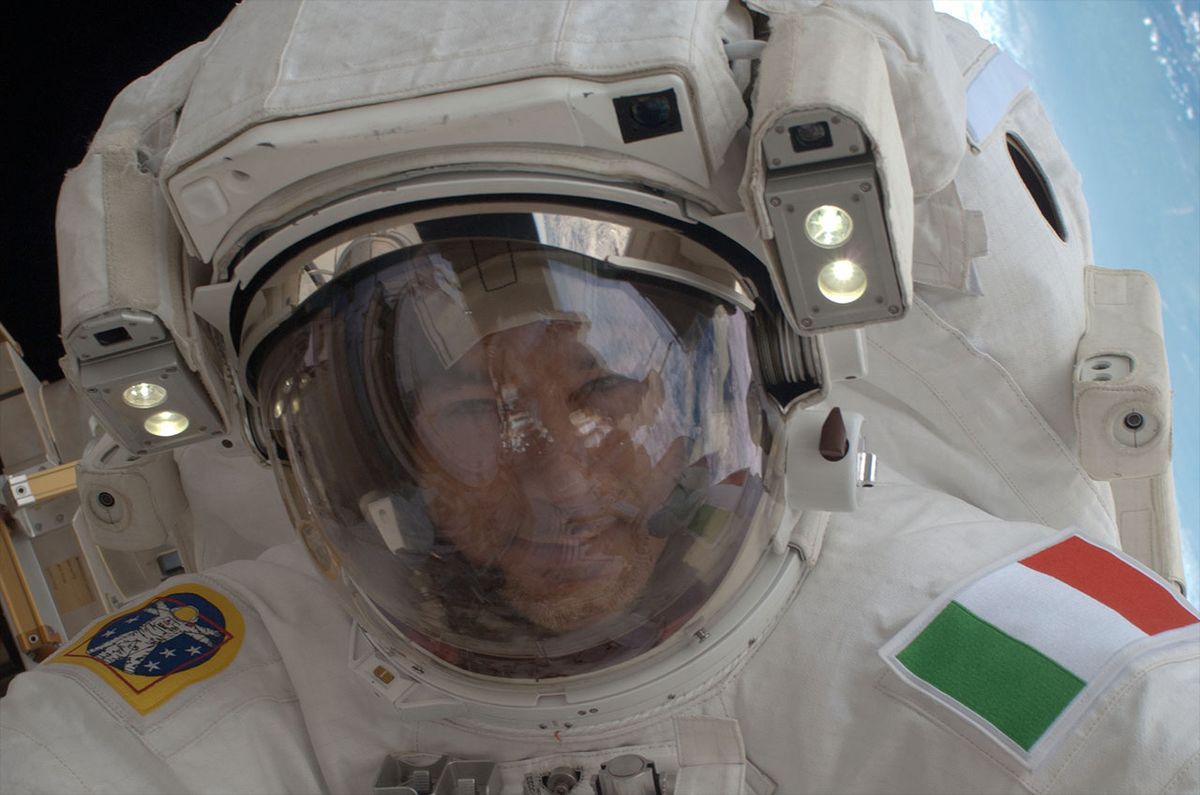Table of Contents
Embark on an odyssey through the vast expanses of the data universe, where enigmatic forces shape the cosmos and celestial bodies are born and perish in spectacular fashion. This journey not only unveils the marvels of astronomical phenomena but also highlights the human endeavor to comprehend the unfathomable. From the pioneering technologies that push the boundaries of space exploration to the collaborative efforts that fuel our cosmic curiosity, ‘Exploring the Limits: A Journey Into the Data Universe’ is a testament to our relentless pursuit of knowledge in the face of the universe’s grand mysteries.
Key Takeaways
- The cosmos is a tapestry of complex phenomena, from the warping of space-time by gravitational waves to the perplexing acceleration caused by dark energy.
- The lifecycle of stars, from their nebulous beginnings to their explosive demises, is a narrative of cosmic evolution, with the potential for the birth of new celestial bodies.
- Cutting-edge tools like particle colliders and advanced telescopes are at the forefront of astrophysical discovery, revealing the universe’s most confounding puzzles.
- Humanity’s role in space exploration is multifaceted, encompassing the technical challenges of spacecraft safety, the inspirational power of public outreach, and the profound psychological impacts of space discovery.
- The future of cosmic inquiry is bright, with interdisciplinary approaches, international collaborations, and next-generation technologies poised to unravel even more of the cosmic mysteries.
The Enigmatic Forces of the Cosmos

Gravitational Waves: The Ripples of Space-Time
The detection of gravitational waves has opened a new chapter in our understanding of the universe. These waves are distortions in the fabric of space-time, caused by some of the most violent and energetic processes in the cosmos. The first direct detection of these waves in 2015 confirmed a century-old prediction by Einstein’s theory of general relativity.
Gravitational waves carry information about their origins and about the nature of gravity that cannot otherwise be obtained.
Scientists are now able to observe the universe in a way that was once thought to be impossible. This has led to a new field of astronomy that could answer fundamental questions about the universe’s beginnings and its ultimate fate. The following table summarizes key gravitational wave events detected to date:
| Date | Event Type | Significance |
|---|---|---|
| Sep 14, 2015 | Binary Black Hole Merge | First direct detection of gravitational waves. |
| Aug 17, 2017 | Binary Neutron Star Merge | First light and gravitational waves observed. |
As research progresses, innovative experiments are being proposed, such as a ‘Sci-fi instrument‘ that will orbit the Sun to hunt for gigantic ripples in space-time. This ambitious project could potentially detect signals from the universe’s infancy, shedding light on the Big Bang and the early cosmos.
Dark Energy: The Mysterious Accelerator of the Universe
Within the vast expanse of the cosmos, dark energy remains one of the most enigmatic concepts. Right now, dark energy is just the name that astronomers gave to the mysterious "something" that is causing the universe to expand at an accelerated rate. This invisible force is not only perplexing but also a dominant component of the universe, influencing its fate.
The presence of dark energy challenges our understanding of the cosmos, suggesting that there is much more to learn about the fabric of space and time.
While dark matter keeps the universe’s structure intact, dark energy works in opposition, driving galaxies apart. The two are often confused, but their roles are distinct: dark matter attracts, dark energy repels. Here’s a quick comparison:
- Dark Matter: Binds galaxies together
- Dark Energy: Accelerates the universe’s expansion
Scientists are tirelessly working to unravel the nature of dark energy. It’s a quest that spans from the microscopic realm of particle physics to the astronomical scales of the universe. As we continue to explore, we inch closer to understanding the true essence of the cosmos.
The Quest for Quantum Gravity: Unifying the Universe’s Laws
The pursuit of quantum gravity stands as one of the most tantalizing endeavors in modern physics. It represents the synthesis of quantum mechanics, governing the microcosm, with general relativity, the theory that reigns over the cosmic scale. The challenge lies in developing a framework where these seemingly incompatible laws coexist.
- Quantum mechanics explains the behavior of particles at the smallest scales.
- General relativity describes the curvature of space-time due to mass and energy.
- Quantum gravity aims to explain phenomena where both theories are relevant, such as the conditions of the early universe or the interiors of black holes.
The quest for quantum gravity is not just a theoretical pursuit; it is a journey that could redefine our understanding of reality itself.
Experimental efforts to uncover clues about quantum gravity are diverse, ranging from particle collider experiments to observations of the cosmos. The table below summarizes some key experimental approaches:
| Experiment Type | Focus Area | Potential Impact |
|---|---|---|
| Particle Colliders | Subatomic particles | Uncover new physics |
| Gravitational Wave Detectors | Space-time ripples | Test general relativity |
| Cosmic Microwave Background Observations | Early universe signals | Inform cosmological models |
As we edge closer to a unified theory, each discovery peels back a layer of the universe’s deepest mysteries, offering a glimpse into the fundamental workings of reality.
The Birth and Death of Celestial Bodies
Stellar Life Cycles: From Nebulae to Supernovae
The life of a star is a tale of transformation, marked by dramatic changes and cosmic phenomena. Stars are born from the dense regions of nebulae, where gas and dust coalesce under gravity’s relentless pull. Over millions of years, these stellar nurseries give rise to protostars that eventually ignite to become main-sequence stars, shining steadily as they fuse hydrogen into helium.
As stars age, their internal dynamics shift. Larger stars may swell into red giants, while others explode in spectacular supernovae, seeding the cosmos with heavy elements. The remnants of these cataclysmic events can lead to the formation of new stars, completing a cosmic cycle of birth, death, and rebirth.
The processes that govern the formation and evolution of stars are pivotal in understanding the broader universe. As we study clusters like M3, with its diverse stellar population, we gain insights into the early stages of galaxy formation and the evolution of stars over cosmic time.
The table below outlines the key stages in a star’s life cycle:
| Stage | Description |
|---|---|
| Nebula | Birthplace of stars, composed of gas and dust. |
| Protostar | A contracting mass of gas that represents an early stage in the formation of a star. |
| Main-Sequence | A stable period of fusion where a star spends the majority of its life. |
| Red Giant/Supergiant | A late stage of stellar evolution where a star has consumed its core’s hydrogen. |
| Supernova | A stellar explosion that occurs at the end of a star’s life cycle, often leading to the creation of a neutron star or black hole. |
In the vastness of space, the life and death of stars are not just isolated events but are interconnected with the formation of planets and even life itself. As we continue to collect and analyze data, we deepen our understanding of these enigmatic forces that shape our universe.
Cosmic Collisions: Crafting Moons and Planets
The universe is a dynamic arena where cosmic collisions play a pivotal role in the architecture of our celestial neighborhood. These cataclysmic events are not mere spectacles of destruction; they are also cradles of creation, where the debris from such impacts can coalesce to form moons and even new planets. The aftermath of these collisions often leaves behind a glowing cloud of debris, which may eventually give rise to new celestial bodies.
The violent early days of planetary formation are marked by frequent and intense collisions. These events are not just theoretical constructs but observable phenomena that provide insights into the evolution of planetary systems.
One such event, observed from 1850 light-years away, involved two exoplanets several times the mass of Earth. The collision resulted in a brightening and dimming star, a phenomenon that might hold secrets to the violent early days of planetary formation. This discovery, made possible by archival data from NASA’s WISE mission, underscores the importance of continuous observation and data collection in understanding the cosmos.
While the full story of these cosmic encounters is still being pieced together, the evidence points to a universe where chaos and order are intertwined, leading to the continuous transformation of the cosmos.
The Search for Immortality: Eternal Suns and Their Secrets
The concept of an eternal sun has long fascinated humanity, posing the question of what would happen if our own Sun never died. Such a scenario would drastically alter the fate of Earth, potentially leading to a planet with extended days and a radically different environment.
- The light of a star is central to its longevity and the life it supports.
- An immortal sun could mean a stable source of energy, but also raises questions about the adaptability of life on Earth.
- The balance of celestial mechanics would be disrupted, leading to unforeseen consequences in the solar system.
The pursuit of understanding eternal stars is not just about the stars themselves, but about the broader implications for life and the cosmos.
The idea of a star that defies the typical life cycle challenges our understanding of stellar physics and the ultimate destiny of celestial bodies. It invites us to explore the enigmatic forces that govern the cosmos and to ponder the potential for human adaptability in the face of such profound changes.
The Pioneers of the Data Universe

Astrophysics on the Frontier: The Latest in Space Exploration
The realm of space exploration is ever-evolving, with new discoveries and challenges emerging at the speed of light. Boldly navigating this frontier, astrophysicists and engineers are pushing the boundaries of what’s possible, harnessing cutting-edge technology to peer deeper into the cosmos than ever before.
Recent episodes of the Space Nuts podcast have highlighted some of the most pressing issues and thrilling developments in the field:
- The risks and protocols associated with fires aboard spacecraft, as discussed in the context of NASA’s safety experiments.
- The enigma of a young star’s prolonged eclipse, potentially caused by a massive planetary collision, and what it reveals about the formation of celestial bodies.
The pursuit of knowledge in astrophysics is a journey that intertwines the immediate concerns within our spacecraft with the cataclysmic events of distant solar systems.
As we continue to explore the unknown, it’s clear that the data universe is vast and full of wonders waiting to be discovered. The insights gained not only propel us further into space but also deepen our understanding of the very fabric of the universe.
The Role of Particle Colliders in Cosmic Discoveries
Particle colliders have become the subterranean giants of modern physics, probing the depths of particle interactions to unveil the secrets of the universe. The Large Hadron Collider (LHC), for instance, has been pivotal in confirming the existence of the Higgs boson, a cornerstone in the Standard Model of particle physics.
The journey to these discoveries is fraught with challenges and uncertainties. Particle colliders are not just about smashing particles; they are about pushing the boundaries of our knowledge. The data collected from these experiments is immense, and the interpretation requires a high level of expertise in data science.
- Data science expertise is crucial for analyzing collider experiments.
- The discovery of new particles can redefine our understanding of physics.
- Collaboration among international teams is essential for success.
Particle colliders are a testament to human curiosity and the relentless pursuit of knowledge. They remind us that the universe is still a place of mystery and wonder, waiting to be explored.
As we continue to delve into the data universe, the role of particle colliders remains indispensable. They are the forges where theoretical predictions meet experimental validation, and where the future of cosmic inquiry is shaped.
Astro-imaging: Capturing the Universe Through a Lens
Astro-imaging has revolutionized our understanding of the cosmos, allowing us to capture the universe through sophisticated lenses and sensors. The art of astro-imaging is not just about taking pictures; it’s about storytelling through the light of distant stars and galaxies. Enthusiasts and professionals alike embark on this visual odyssey, often sharing their celestial captures with the world, contributing to both scientific research and public outreach.
The process of astro-imaging involves a series of meticulous steps:
- Selection of the target celestial body or phenomenon
- Calibration of equipment, including telescopes and cameras
- Capturing the image, often over extended periods to gather sufficient light
- Post-processing to enhance details and remove noise
Astro-imaging is a bridge between the scientific community and the public, translating complex data into tangible visuals that inspire and educate.
With the advent of cloud integration and data migration tools, the sharing and analysis of astro-images have become more accessible. Amateurs like Dr. Dave, with over 40 years of experience, contribute significantly to the field, offering insights into image processing, solar astronomy, and more. Their blogs and publications often serve as a valuable resource for understanding the nuances of astro-imaging, from the basics of EXIF data to the construction of remote observatories.
The Human Element in Space Exploration

The Challenges of Spacecraft Safety and Navigation
Ensuring the safety of spacecraft and their navigation systems is a complex challenge that involves multiple layers of technology and human expertise. The unforgiving vacuum of space demands rigorous safety protocols to protect both the crew and the mission’s objectives. Fires on spacecraft, for example, behave differently in microgravity, making their management a critical aspect of safety. NASA’s SAFIRE experiments are designed to understand fire behavior in space, contributing to improved safety measures.
- Fires on Spacecraft: A hot topic in space safety, with NASA’s experiments providing valuable insights.
- Navigation Systems: Precision and reliability are paramount to successfully maneuver through the cosmos.
- Astronaut Training: Rigorous preparation ensures that crew members can handle emergencies.
The intricacies of space travel require not only technological prowess but also a deep understanding of the cosmos and human resilience. The journey into space is fraught with perils, and each mission adds to our collective knowledge, enhancing the safety of future endeavors.
Public Outreach and Education: Inspiring the Next Generation
The cornerstone of future scientific advancement lies in the hands of the young minds we inspire today. Engaging the youth through educational outreach is not just about imparting knowledge; it’s about igniting curiosity and fostering a lifelong passion for the cosmos. Programs like NASA’s IV&V Stem Engagement offer authentic experiences that bring the wonders of space closer to students, sparking an interest that may one day lead to groundbreaking discoveries.
The Purposeful Universe and similar initiatives have demonstrated the power of multimedia in science communication. Award-winning videos and interactive content make complex concepts accessible and exciting, resonating with a diverse audience.
To ensure a lasting impact, educational resources must be both comprehensive and captivating. Below is a list of resources that have proven effective in bringing cosmic science to the classroom:
- Purposeful Universe Videos: Simplifying cosmology and evolution.
- Educational Workbooks: Tailored for different school levels.
- Online Courses: Offering in-depth exploration of scientific topics.
- Teacher Modules: Providing essential tools for educators.
By investing in these resources, we not only educate but also empower the next generation to push the boundaries of our understanding of the universe.
The Psychological Impact of Confronting the Vastness of Space
The vastness of space presents a unique psychological challenge for those who venture beyond Earth’s atmosphere. Astronauts encounter substantial psychological obstacles, including feelings of isolation and loneliness. Being apart from family, friends, and the nurturing environment of Earth can lead to profound introspection and a reevaluation of one’s place in the universe.
The experience of confronting the infinite cosmos can be transformative, often leading to a shift in perspective known as the ‘overview effect’; a cognitive shift in awareness reported by some astronauts during spaceflight.
While the ‘overview effect’ can be enlightening, the day-to-day reality of living in space requires coping strategies to maintain mental well-being. Here are some methods employed by astronauts:
- Regular communication with loved ones
- Structured daily routines
- Psychological support from professionals
- Recreational activities to foster a sense of normalcy
Understanding and preparing for these psychological challenges is crucial for the success of long-duration space missions and the well-being of the crew.
The Future of Cosmic Inquiry
The Next Generation of Telescopes and Their Potential Discoveries
The advent of next-generation telescopes is poised to revolutionize our understanding of the cosmos. These advanced observatories will not only capture images with unprecedented clarity but also probe the atmospheres of distant exoplanets, offering insights into their composition and potential habitability. The excitement within the astronomical community is palpable, as these instruments may change ideas about how the universe began and evolved.
The potential of these telescopes extends beyond mere observation; they are tools for discovery. With their help, astronomers anticipate uncovering details about phenomena that have long eluded us, such as the birth of new moons and the intricate dynamics of far-off solar systems. The technology powering these telescopes represents the latest in "grab and go" imaging rigs, combining portability with cutting-edge capabilities.
The stakes are high, as the findings from these telescopes could redefine our place in the universe and expand the frontiers of human knowledge.
Here’s a glimpse at what we can expect from the next generation of telescopes:
- Enhanced detection of gravitational waves
- Direct imaging of exoplanets
- Detailed spectroscopic analysis of celestial objects
- Discovery of new cosmic phenomena
As we stand on the cusp of these potential discoveries, the anticipation is akin to that of an explorer on the brink of a new world. The universe awaits, ready to unveil its secrets to those with the vision to look deeper into the night sky.
Interdisciplinary Approaches to Unraveling Cosmic Mysteries
The quest to understand the universe is not a solitary journey but a collaborative effort that transcends traditional academic boundaries. Interdisciplinary approaches are essential in piecing together the cosmic puzzle. By combining expertise from various fields such as physics, astronomy, computer science, and even philosophy, researchers can gain a more comprehensive understanding of the cosmos.
- Cosmology: Exploring the origins and evolution of the universe.
- Galactic Astronomy: Investigating the structure and dynamics of galaxies.
- Particle Physics: Examining the fundamental particles and forces.
- Astrobiology: Searching for life beyond Earth.
The synergy between different scientific disciplines can lead to breakthroughs that were once thought impossible. It is through this collaborative lens that we can begin to see the full picture of our universe.
The integration of data analysis, theoretical modeling, and experimental observation has paved the way for new discoveries. As we continue to explore the vastness of space, it is the collective effort of diverse scientific communities that will propel us forward into the unknown.
The Role of International Collaboration in Space Science
The pursuit of knowledge in the vast data universe is not a solitary journey but a collective endeavor. International collaboration in space science has proven to be a cornerstone of astronomical achievements, fostering a shared understanding of the cosmos.
- Joint Missions: Countries pool resources and expertise to launch sophisticated telescopes and probes.
- Data Sharing: Open access to data allows scientists worldwide to contribute to and benefit from research.
- Policy Development: Collaborative efforts lead to the establishment of global space policies and guidelines.
The synergy of global minds and resources amplifies the impact of each nation’s contributions, turning individual whispers into a chorus of cosmic discovery.
Such partnerships not only accelerate scientific advancement but also promote peace and unity. By transcending borders, we embrace a universal identity bound by curiosity and the relentless pursuit of understanding our place in the universe.
Conclusion: Embracing the Infinite Quest
As we conclude our journey into the data universe, we are left with a profound sense of awe and an insatiable curiosity. From the potential birth of new moons to the enigmatic puzzles of the cosmos, our exploration has spanned the vastness of space and the intricacies of particle physics. We’ve witnessed the dedication of astronomers and physicists, like those at the Large Hadron Collider and the Space Nuts podcast, who strive to unravel the universe’s most perplexing secrets. Our voyage has shown us that the quest for understanding is not just about finding answers, but about embracing the questions that propel us forward. The data universe is boundless, and as we peer into its depths, we are reminded that every discovery leads to new mysteries, every insight yields more questions, and the journey itself is the greatest adventure of all.
Frequently Asked Questions
What are gravitational waves and why are they important?
Gravitational waves are ripples in the fabric of space-time caused by some of the most violent and energetic processes in the universe, such as colliding black holes. They are important because they provide a new way of observing the cosmos, offering insights into phenomena that are invisible to traditional telescopes.
What is dark energy, and how does it affect the universe?
Dark energy is a mysterious force that is causing the expansion of the universe to accelerate. It makes up about 68% of the universe and affects its large-scale structure, but its nature remains one of the biggest unsolved puzzles in cosmology.
How do scientists search for evidence of quantum gravity?
Scientists search for evidence of quantum gravity by conducting experiments at particle colliders, studying the behavior of space-time at the smallest scales, and looking for signatures in the cosmic microwave background radiation that might hint at a unified theory of quantum mechanics and general relativity.
What are the challenges faced by spacecraft in terms of safety and navigation?
Spacecraft face numerous challenges including exposure to radiation, micro-meteoroids, extreme temperatures, and the need for precise navigation to reach and operate in their target destinations. Ensuring the safety of both robotic and crewed missions is a complex and critical aspect of space exploration.
How do public outreach and education programs inspire the next generation in space science?
Public outreach and education programs engage the community through interactive exhibits, educational resources, and events that showcase the wonders of space. They inspire curiosity and encourage young people to pursue careers in science, technology, engineering, and mathematics (STEM) fields.
What role does international collaboration play in advancing space science?
International collaboration is vital for pooling resources, sharing expertise, and coordinating efforts across countries to undertake large-scale projects that no single nation could accomplish alone. It fosters a global community of researchers working together to solve the mysteries of the universe.





